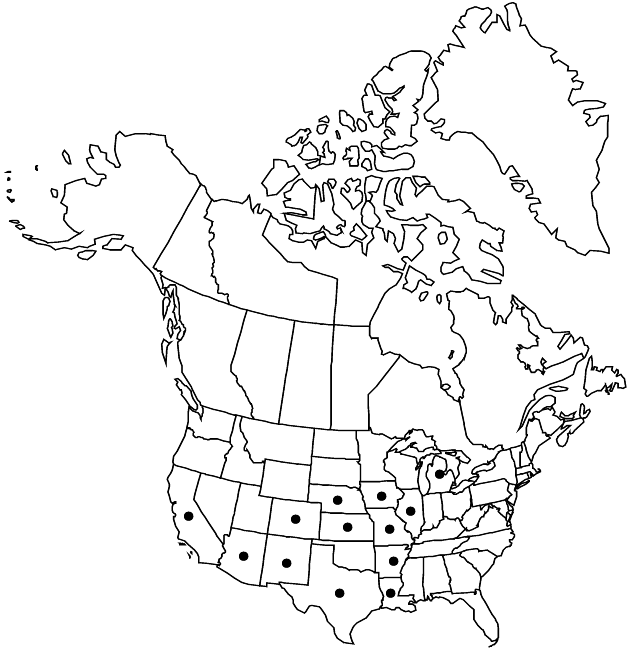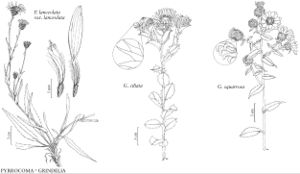Difference between revisions of "Grindelia ciliata"
Syst. Veg. 3: 575. 1826.
FNA>Volume Importer |
FNA>Volume Importer |
||
| Line 14: | Line 14: | ||
|name=Grindelia papposa | |name=Grindelia papposa | ||
|authority=G. L. Nesom & Y. B. Suh | |authority=G. L. Nesom & Y. B. Suh | ||
| − | }}{{Treatment/ID/Synonym | + | }} {{Treatment/ID/Synonym |
|name=Haplopappus ciliatus | |name=Haplopappus ciliatus | ||
|authority=(Nuttall) de Candolle | |authority=(Nuttall) de Candolle | ||
| − | }}{{Treatment/ID/Synonym | + | }} {{Treatment/ID/Synonym |
|name=Prionopsis ciliata | |name=Prionopsis ciliata | ||
|authority=(Nuttall) Nuttall | |authority=(Nuttall) Nuttall | ||
| Line 58: | Line 58: | ||
|publication year=1826 | |publication year=1826 | ||
|special status= | |special status= | ||
| − | |source xml=https://jpend@bitbucket.org/aafc-mbb/fna-data-curation.git/src/ | + | |source xml=https://jpend@bitbucket.org/aafc-mbb/fna-data-curation.git/src/8f726806613d60c220dc4493de13607dd3150896/coarse_grained_fna_xml/V19-20-21/V20_981.xml |
|tribe=Asteraceae tribe Astereae | |tribe=Asteraceae tribe Astereae | ||
|genus=Grindelia | |genus=Grindelia | ||
Revision as of 15:28, 18 September 2019
Annuals or biennials, 20–150+ cm. Stems erect, stramineous, glabrous (branched distally). Cauline leaf blades oblong to obovate, 30–50(–80) mm, lengths mostly 2–4 times widths, bases ± clasping, margins dentate (teeth apiculate to setose), apices rounded, faces glabrous, obscurely, if at all, gland-dotted. Heads borne singly or in open to crowded, corymbiform arrays. Involucres broadly urceolate, 10–15 × 15–25 mm. Phyllaries in 3–5 series, spreading to appressed, subulate to linear-lanceolate, apices recurved to straight, attenuate, slightly to moderately resinous. Ray florets 25–45; laminae 10–15+ mm. Cypselae whitish to grayish, 2–4 mm, apices smooth or minutely coronate, faces smooth or striate; pappi (persistent or tardily falling) of 25–40 barbellate bristles 3–7+ mm subtending 8–15+ barbellate, setiform awns or subulate scales 7–10 mm (the longer surpassing disc corollas). 2n = 12.
Phenology: Flowering Aug–Oct.
Habitat: Disturbed sites, prairies, railroads, roadsides
Elevation: 100–1500 m
Distribution

Ariz., Ark., Calif., Colo., Ill., Iowa, Kans., La., Mich., Mo., Nebr., N.Mex., Okla., Tex.
Discussion
Selected References
None.
